Design Meta, governing data modelling
Contents & topics Data governance
Metadata Intro.

Metadata, what is in it?
Just having data, there are a lot of questions to answer:
📚 Information data is describing?
⚙ Relationships data elements?
🎭 Who is using data for what proces?
⚖ Inventory information being used ?
🔰 Most logical
back reference.
Contents
| Reference | Topic | Squad |
| Intro | Metadata Intro. | 01.01 |
| opr process | Operational process - data modelling. | 02.01 |
| BI Analytics | BI Analytics - data modelling. | 03.01 |
| OOLC-I | Object Oriënted Life Cycle model (I). | 04.01 |
| OOLC-II | Object Oriënted Life Cycle model (II). | 05.01 |
| What next | Step by step, Travelling the unexplored. | 06.00 |
| | Following steps | 06.02 |

Combined pages as single topic.
👓 deep dive
, Data Proces layers
👓 describe data
,Data Administration
🚧 Data Modelling
👓 Security Access
Progress
- 2019 week:32
- Some clean-ups for the internal links on the page.
A informational discussion could be a trigger for new content.
- 2019 week:18
- Conforming temporary page. Just headers - topics to do.
From old page security desing to rework.
Operational process - data modelling..
The modelling of data and than building your own on premise solution was hot in the 80´s. These days is hardly seen to build on premise solutions.
🤔 Modelling data for an operational solution is knowledge becoming rare. It is not needed anymore for several reasons. One of those are commercial ERP solutions.
⚠ In the cases when an on premise approach is the only option, as a pitty not getting that attention as necessary requirement. Agile: fail fast.
Example SAP
This core concept of auditing has remain unchanged since BO XI 3.1, though the number of tables have increased significantly in BI 4.x audit database.
The increase in number of tables is primarily due to increase in the attributes being captured and more normalization of the data structures.
audit data model (SAP blog BI 4.x )
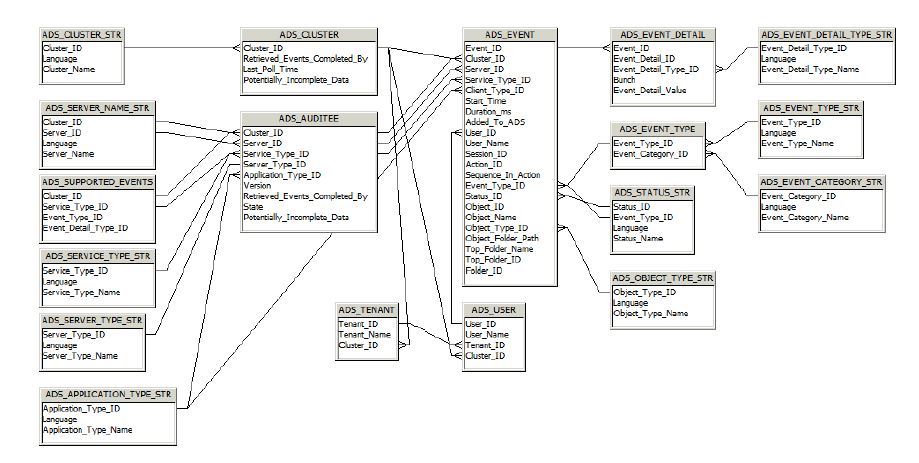
Example Salesforce
Field Service Lightning Core Data Model (Field Service Lightning Developer Guide).
If your team often performs the same tasks for multiple customers, create work types to standardize your field service work.
Work types are templates that can be applied to work orders and work order line items.
On a work type, you can define the duration of the work and add skill requirements to indicate the level of expertise needed to complete the work.
You can also opt to auto-create a child service appointment on any record that uses the work type.
Work orders and service appointments are supported by a variety of objects that control when and where the work occurs, the nature of the work, and who performs it.
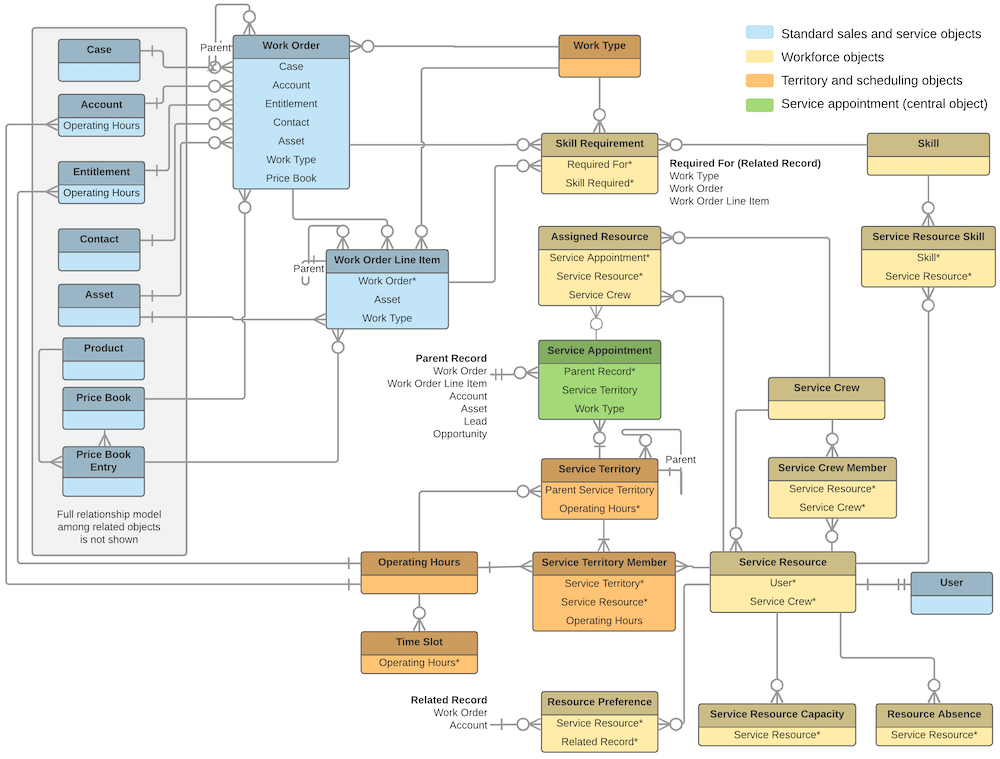
BI Analytics - data modelling.
The classic business Intelligence reproting still heavily relies on data modelling with the goal of report building.
🤔 The difference in approach is remarkable. Operational requirements sometimes get solved by using the datawarehouse is also remarkable. Something must be wrong.
Example Kimball group.
Enterprise Data Warehouse Bus Architecture (Kimball group).
The associated Enterprise Data Warehouse Bus Matrix, shown below, is a key design tool representing the organization´s core business processes and associated dimensionality.
It´s the architectural blueprint providing the top-down strategic perspective to ensure data in the DW/BI environment can be integrated across the enterprise, while agile bottom-up delivery occurs by focusing on a single business process at a time.
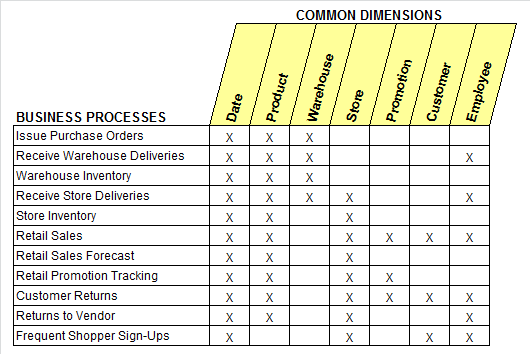
Example Nova architecture van der Lans.
Migrating to Virtual Data Marts using Data Virtualization Simplifying Business Intelligence Systems (r20 pdf - sponsored by Cisco)
Unfortunately, datamarts are expensive because they require a lot of work to develop, operate, and maintain.
They also complicate the architectures of BI systems. For example, changes made to the data warehouse can lead to a multitude of changes throughout all the data marts,
and changes made to a report can involve complex modifications to the data marts and the corresponding ETL programs.
In addition, they can degrade data quality and complicate data governance.
..
Star Schema. The tables in a data mart developed with SQL technology are usually organized as a star schema.
In a star schema?the tables are classified as dimension?tables (or?dimensional tables) and fact tables. Fact tables are the central tables?in a?star schema.
A row in a?fact table usually represents?a business event.
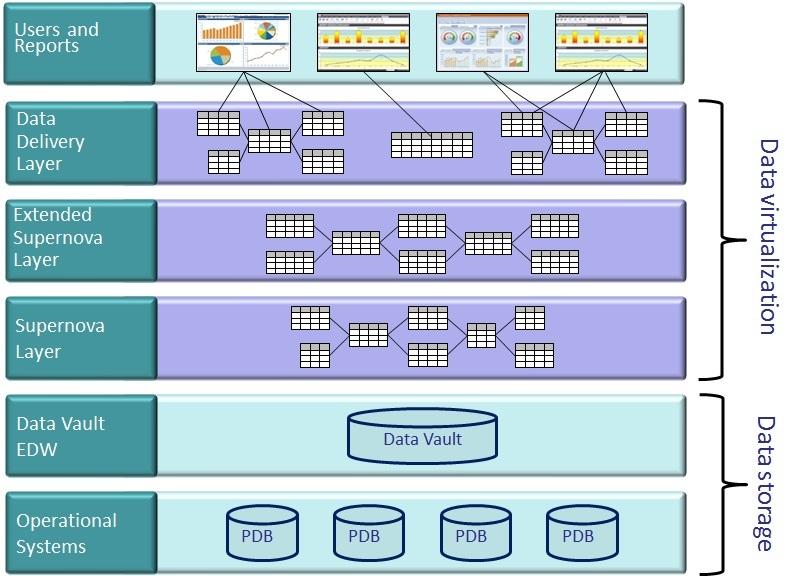

Object Oriënted Life Cycle model (I).
An object - a container with al lot of artifacts.
Object containers are describing the whole of all. A sample model of legal property registration.
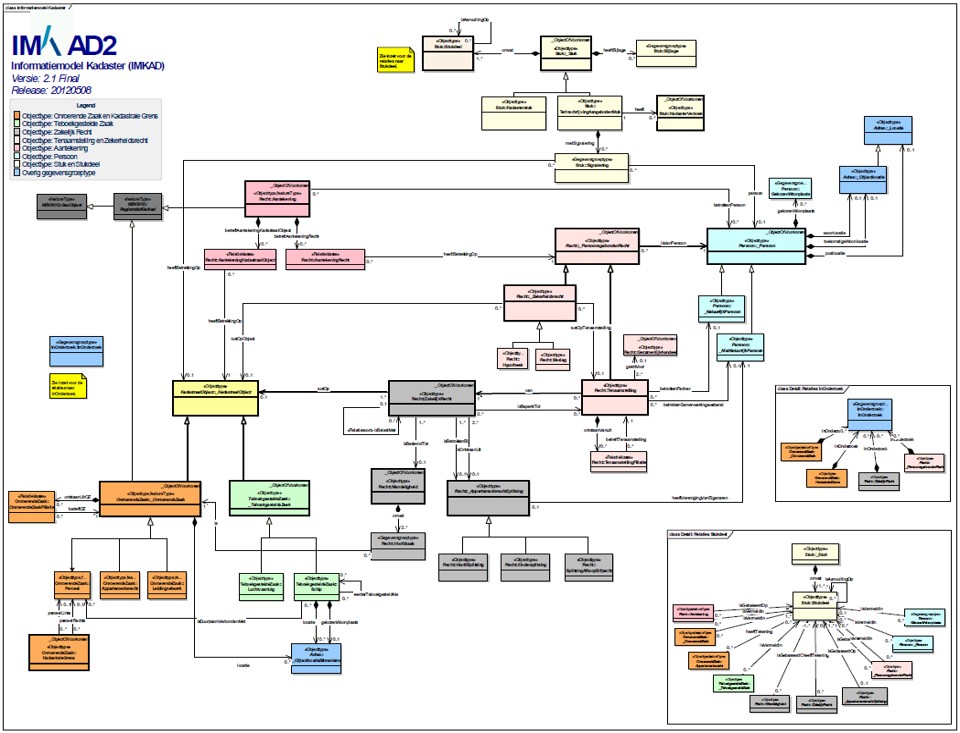
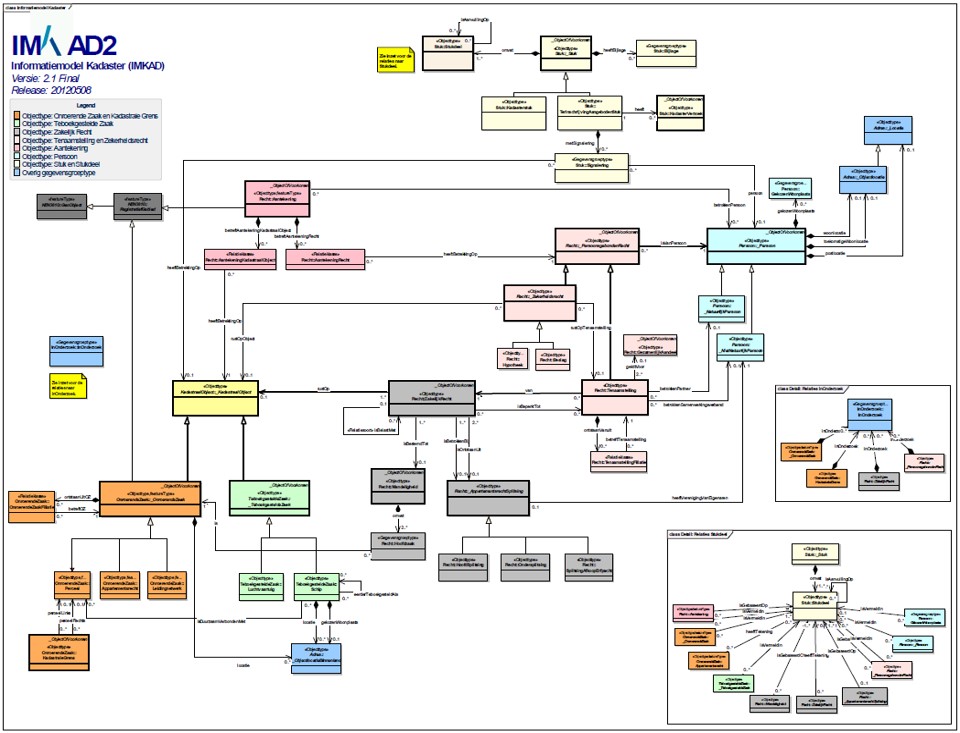
As being too complicated only a part is realy uased.
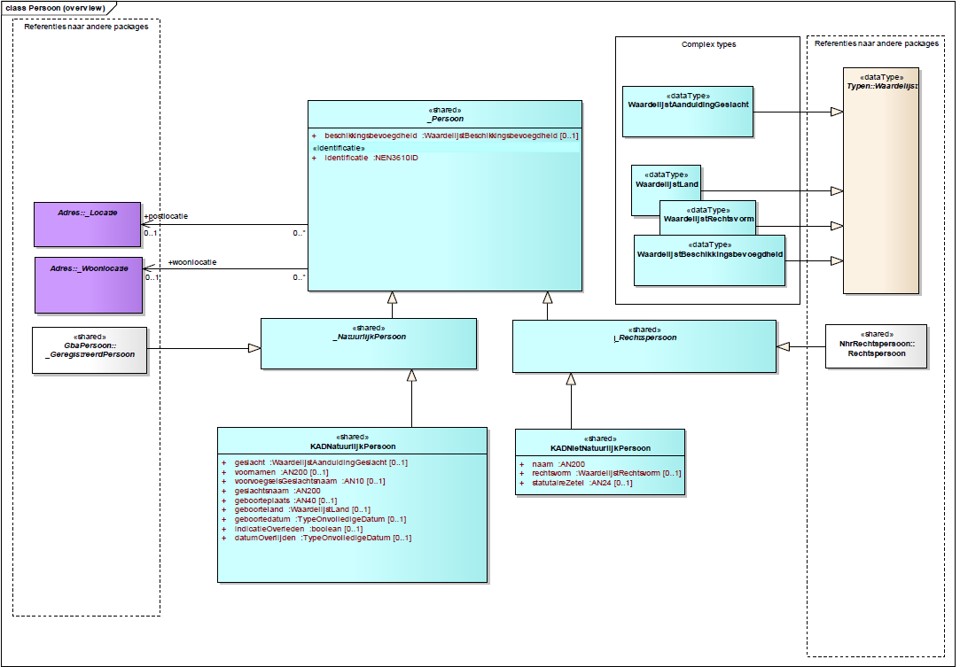
Interested in only a small part, the relationship of property and owner searching what the owner as object or artifact is.
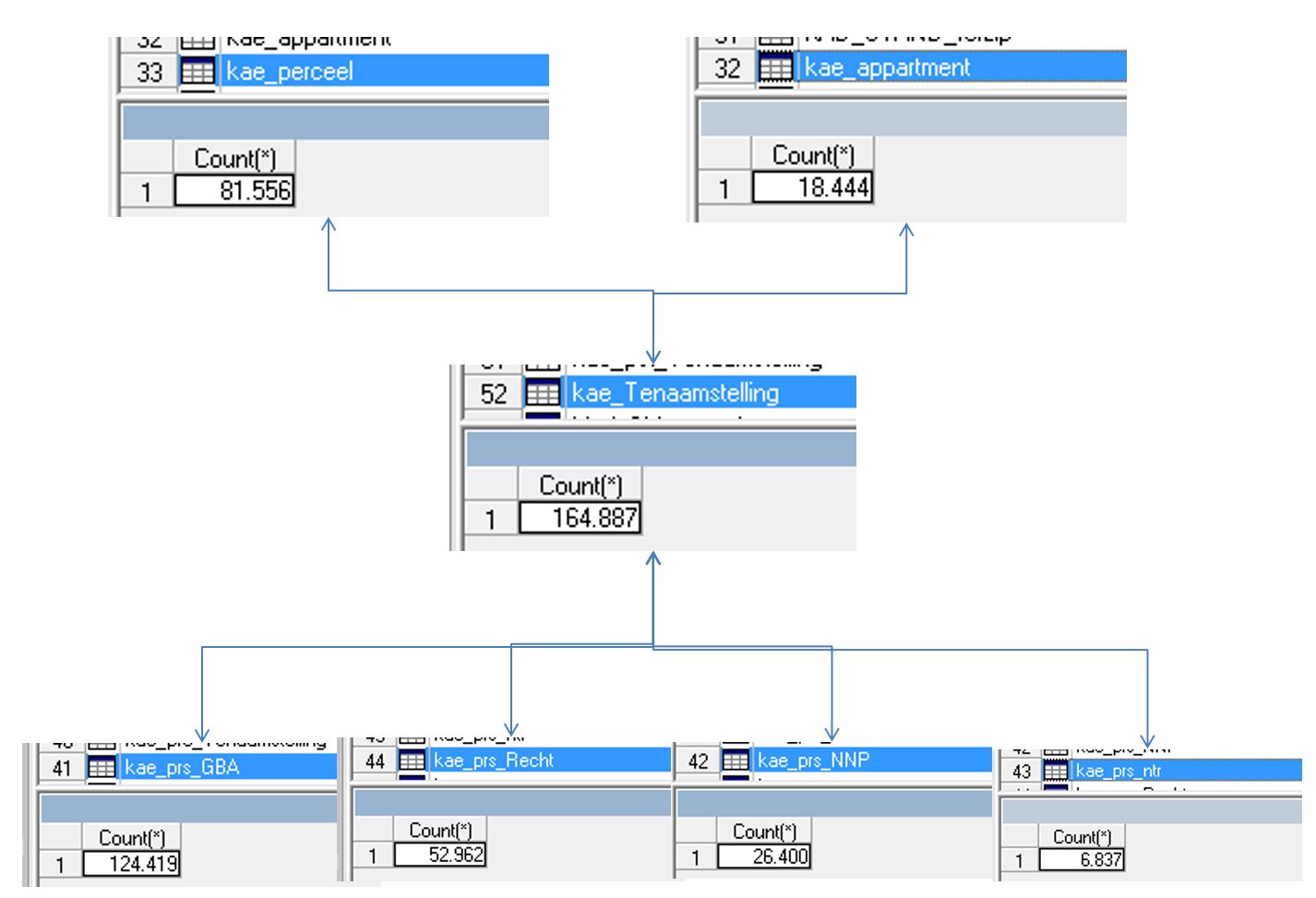
Finding an ER relationship with several type of property objects and several type of owner objects. Easilty missing some types if you do not check all on completeness.

Object Oriënted Life Cycle model (II).
Converting an object container to relational records.
Getting data in containers goes into a challengin conversion.
- Receiving (a) and prepraring (b) for further processing.
- Bring it into an target technical environment (TE)
- Extract within that TE to a logical sementical structure
- Convert sementical to users - programmers lay-out.
What users -programmers have as theier data, can be a source to the next data message container api interface decoupling.
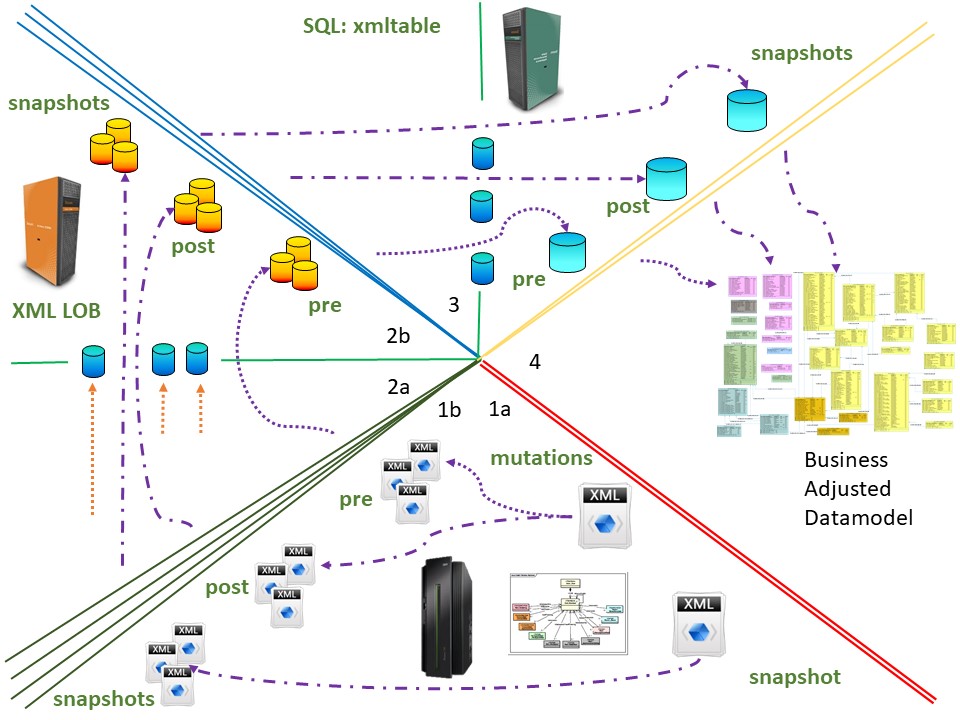
Life cycle of an object in a chain.
Every object can change in SOME content by time. With a pre-post key identification unique to the mutation block object of ALL content, there is a validation chain.
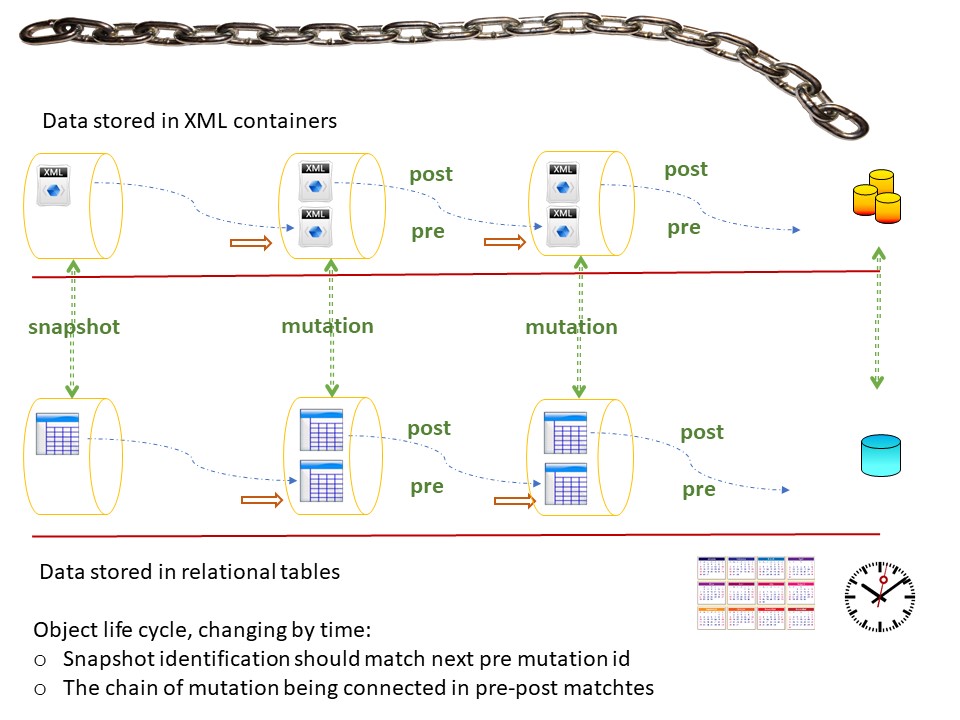
Every object can change in time on another moment. There will be a lot of chains. Having te identifictions of object an d time any viewpoint is possible.
A new object is a mutation without a pre situation.
A removed - invalidated object is a mutation without a post situation.
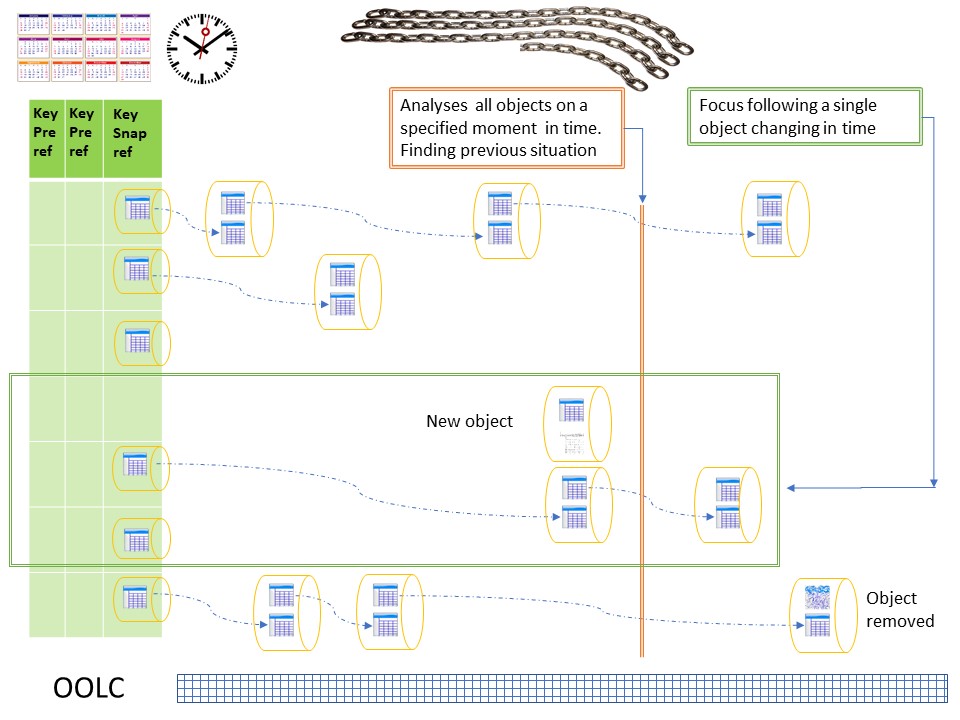

Step by step, Travelling the unexplored.
OOLC object oriënted life cycle - artifact mindset
🤔 designing business processes and the corresponding information represented as data goes by containers of information.
⚠ The historical apporach with SQL normalisation 3nf is based on optimization because of technical limitations on artifacts.
⬇ - ⬆ Time for change... ⬅ - ➡
OOLC object oriënted life cycle - ACID
🤔 Processing containers of information (example XML) requires several conversions.
Those conversions do not follow normal aasumptions of an internal data flow using a DBMS system. It isn't the using DBMS transactional automatic controls.
The input data can´t be trusted and must get validated on (ACID): availablity-atomicity, consistency, integrity -isolation, durabiltiy.
OOLC object oriënted life cycle - chain mindset - variable moments
The life cycle of objects are chains for any of those object. When the moments of mutations for each object is undetermined, there is a chaotic system of state.
Selecting an dtermining the moment of state on each object is a required step to do. Following the changes in time is anohter viewpoint that is possible.
This kind of different thinking in designing the way of analyzing information could be a game changer.
No it is not the blockchain ledger. No distributed approach of duplicated chains neiter an prove of unchanged blocks. It is basic following information flow and change in time.
OOLC object oriënted life cycle - chain mindset - fixed moments
When the moments of change - mutations are mandatory moments a lot gets simplified. That situation is by example caused by legal delivery on reporting periods.
Predictable moments of new inforamtion make the pre mutation situation and then undefined varbiel time moment of change obsolete as being a standard series.
Using that standard series definition is the most understandable way of approching that. Little for identicational keys on mutations needed.

Transforming processes.
Change is a the only constant factor of a journey. Never knowing for sure what is next. Changing fast is exploring where no one has gone before.
The people around ICT are a different kind of species than the ones running the business.
Understanding the business during fast transitions is another world.
Combined pages as single topic.

🔰 Most logical
back reference.
 Metadata, what is in it?
Just having data, there are a lot of questions to answer:
Metadata, what is in it?
Just having data, there are a lot of questions to answer:













